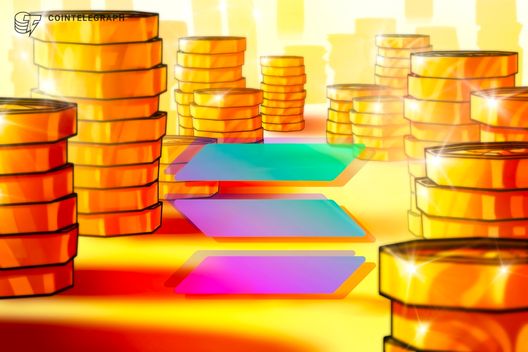Are real world assets set to take market share?

The blockchain has seen many narratives over the years. Some of these have turned into actual use cases and continued with strength. But there is a new kid on the block, and they go by the name of real world assets (RWAs).
What are RWAs?
In simple terms, RWAs are tangible assets from the physical world that interact with the blockchain. The biggest assets being represented currently are real estate, private credit, gold and U.S. treasuries. But the ceiling for expansion is almost unlimited and this is certainly an area to look out for. It is reported that the overall Total Value Locked (TVL) for DeFi is roughly $38.8 billion, with a high of around $178 billion in November 2021, which illustrates a big potential opportunity for investors.
Real estate alone is seeing fewer complications in terms of process and is also negating the need for a middleman to see the deal out. Not only does it provide a more efficient solution but it is cost-effective too.
How do they work?
Like most assets, you can simply buy through a marketplace or vendor. RWAs are the same; the only difference is these are assets being brought onto the blockchain as opposed to being made new and this is known as tokenization.
In terms of formula, the price fluctuates just like most assets on the market, so if you were to buy a fractionalized piece of real estate, its price would change based on the market just like Bitcoin would. The choice of asset would depend on how this works as different protocols have different processes. Stablecoins as RWA would obviously be backed 1:1 by the U.S. dollar.
This means that you are just buying a digital version of the asset in essence and this is bound to you until you sell — similar to cryptocurrencies. If we take real estate as an example again, you would digitally own that property or at least a portion of that property depending on how much you invest.
The best part about bringing these assets onto the blockchain and being available to investors is that they can be fractionalized. For example: If Bitcoin was priced at $30,000 but you can’t afford it, you can buy a fraction of it instead. This is similar to how the price of gold works too, we have seen gold tokenized, and it is also one of the biggest tokenized assets on the market.
The tokenization of these assets allows a bigger pool for investors to choose from, providing more variety in their spread, especially when they are world-renowned assets such as real estate or gold.
How are they being accessed?
As these assets are on the blockchain, there obviously needs to be a way to access them. Luckily there are dedicated platforms to make this process as simple as possible. One that is truly providing a smooth process is Fluent Finance. They provide a two-way bridge between traditional finance (TradFi) and distributed ledgers (DeFi) via their advanced stablecoin protocol. There are also some other RWA providers, such as Ondo Finance (RWA marketplace), Maple Finance (private credit) and Centrifuge (RWA marketplace).
Access will only improve as adoption increases and RWAs provide a new market for those still within the Web2 space to move over — especially with the added benefits provided in terms of efficiency compared to the current state of ownership.
In terms of accessibility for users, this essentially means that anyone in the world can access this without an issue, even if these assets are typically not available to them such as someone in a small town in Nigeria buying U.S treasuries. This allows for everyone to be on an equal playing ground with essentially no limits or restrictions on availability. This also allows for investors to diversify their portfolios due to increased financial instruments, enabling a better investment/savings plan.
Things to keep in mind
There are obviously many positives with the digital world and RWAs are benefitting greatly from this; however, there are some things to look out for when navigating them.
Market movement is one area that many may not monitor closely enough. The reason for this is that some RWAs are directly linked to their own market. Unlike crypto, in these markets, there isn’t simply a price to monitor your assets. If you’re invested in real estate for example, this could vary on economic conditions, interest rates or even the type of property which can also fluctuate.
So, understanding the market you enter with RWAs is vital due to the potential complexities that other asset classes don’t necessarily experience. A final tip for anyone looking to get into RWAs would be to understand the potential barriers such as regulation or fragmentation. We know that regulation is a problem within the Web3 space already but RWAs will add complications.
As for fragmentation, this is a potential issue due to fractionalization, in which multiple people own a percentage of a bigger asset and as a result, decision-making can be more difficult. But this doesn’t always have to be a negative, as the decision-making and overall process could also be more efficient.
Conclusion
As the blockchain space begins to grow even more, it is expected that these processes will become even easier to use, especially for new adopters who are entering this space as it can be a daunting process. This combined with new platforms and constant blockchain improvements, Web2 and Web3 integration will likely be adopted at greater levels, and RWAs will enter as a whole new market regime.
The added value from such efficient processes will be a massive factor in adoption levels — especially with the removal of the middleman that’s required with many processes within the real world and Web2 space (like with real estate, where it can take months to complete).
RWAs provide a whole new level of sustainability and could be a leading narrative in the Web3 space for years to come. It is certainly an exciting time to be involved and it will be interesting to see how it evolves.
The information provided here is not investment, tax or financial advice. You should consult with a licensed professional for advice concerning your specific situation.
Ilias Salvatore is the brand/product lead of Flooz.xyz — the easy place to buy, trade and track crypto with real-time data and alerts.
This article was published through Cointelegraph Innovation Circle, a vetted organization of senior executives and experts in the blockchain technology industry who are building the future through the power of connections, collaboration and thought leadership. Opinions expressed do not necessarily reflect those of Cointelegraph.



